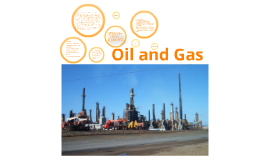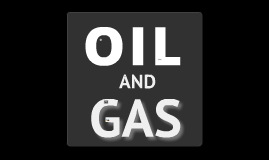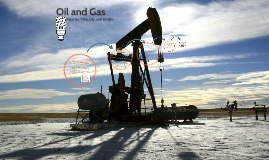Oil and Gas
Transcript: Oil for automobiles at gas stations Drilling rigs in fields (getting oil from underground) If all the natural gas pipelines in the U.S were connected to eachother they would stretch toand from the moon almost 3 times Pros of oil and gas 1: each barrel filles up 2-5 barrels of fresh water 2: oil & gasare used for heat and electic power as well as for fuel for transportation Prezi By: Talia, Lily, and Dwight bags and packaging • pesticides and herbicides • food preservatives • fertilizers 1 United States 18,840,000 2011 est. 2 China 9,790,000 2011 est. 3 Japan 4,464,000 2011 est. 4 India 3,292,000 2011 est. 5 Russia 3,196,000 2012 est. 6 Saudi Arabia 2,817,000 2011 est. 7 Brazil 2,594,000 2011 est. 8 Germany 2,400,000 2011 est. 9 South Korea 2,301,000 2012 est. 10 Canada 2,259,000 NA 11 Mexico 2,133,000 2011 est. 12 France 1,792,000 2011 est. 13 Iran 1,709,000 2012 est. 14 Italy 1,454,000 2011 est. 15 Spain 1,384,000 2011 est. 16 Singapore 1,380,000 2012 est. 17 Indonesia 1,322,000 2011 est. 18 United Kingdom 1,217,000 2013 est. 19 Australia 1,023,000 2011 est. 20 Netherlands 1,010,000 2011 est. 21 Iraq 818,000 2011 est. 22 Egypt 816,300 2011 est. 23 Taiwan 786,100 2011 est. 24 Thailand 721,100 2011 est. 25 Turkey 706,100 2011 est. 26 Argentina 678,100 2011 est. 27 Belgium 644,400 2011 est. 28 South Africa 590,900 2011 est. 29 Poland 576,600 2011 est. 30 United Arab Emirates 572,100 2011 est. 31 Venezuela 571,000 2011 est. 32 Malaysia 542,900 2011 est. 33 Pakistan 426,700 2011 est. 34 Greece 343,400 2011 est. 35 Kuwait 339,000 2011 est. 36 Hong Kong 333,900 2013 est. 37 Chile 321,700 2011 est. 38 Ukraine 320,600 2011 est. 39 Algeria 316,400 2011 est. 40 Sweden 316,000 2011 est. 41 Philippines 315,600 2011 est. 42 Libya 314,000 2011 est. 43 Colombia 287,000 2011 est. 44 Ecuador 280,000 2012 est. 45 Nigeria 271,600 2011 est. 46 Vietnam 259,900 2012 est. 47 Portugal 259,700 2011 est. 48 Syria 258,800 2011 est. 49 Switzerland 258,200 2011 est. 50 Norway 255,200 2011 est. 51 Kazakhstan 244,200 2011 est. 52 Israel 238,400 2011 est. 53 Romania 218,200 2011 est. 54 Austria 210,700 2011 est. 55 Peru 206,900 2012 est. 56 Finland 204,800 2011 est. 57 Morocco 203,600 2011 est. 58 Czech Republic 199,000 2011 est. 59 Qatar 189,700 2012 est. 60 Belarus 188,800 2011 est. 61 Yemen 177,000 2011 est. 62 Azerbaijan 168,000 2011 est. 63 Denmark 160,200 2011 est. 64 Puerto Rico 151,600 2011 est. 65 Cuba 150,200 2011 est. 66 New Zealand 148,900 2011 est. 67 Turkmenistan 145,000 2011 est. 68 Ireland 144,000 2011 est. 69 Hungary 141,100 2011 est. 70 Uzbekistan 137,100 2011 est. 71 Dominican Republic 122,300 2011 est. 72 Bulgaria 112,700 2011 est. 73 Bangladesh 108,900 2011 est. 74 Jordan 107,000 2011 est. 75 Lebanon 106,700 2011 est. 76 U.S. Virgin Islands 106,100 2011 est. 77 Panama 98,890 2011 est. 78 Oman 98,000 2011 est. 79 Sudan 95,450 2011 est. 80 Sri Lanka 89,620 2011 est. 81 Tunisia 88,380 2011 est. 82 Slovakia 83,910 2011 est. 83 Guatemala 80,810 2011 est. 84 Angola 79,430 2011 est. 85 Kenya 79,410 2011 est. 86 Jamaica 78,520 2011 est. 87 Croatia 74,410 2012 est. 88 Serbia 72,770 2013 est. 89 Curacao 72,000 2010 est. 90 Lithuania 70,390 2011 est. 91 Ghana 61,590 2011 est. 92 Luxembourg 61,380 2011 est. 93 Cyprus 58,430 2011 est. 94 Honduras 58,150 2011 est. 95 Bolivia 55,560 2013 est. 96 Slovenia 52,930 2011 est. 97 Bahrain 51,450 2012 est. 98 Uruguay 51,100 2011 est. 99 Costa Rica 50,200 2011 est. 100 Ethiopia 49,080 2011 est. 101 Armenia 45,300 2011 est. 102 El Salvador 44,040 2011 est. 103 Tanzania 43,310 2011 est. 104 Trinidad and Tobago 41,000 2011 est. 105 Burma 40,620 2011 est. 106 Senegal 40,600 2011 est. 107 Cambodia 39,350 2011 est. 108 Albania 38,390 2011 est. 109 Papua New Guinea 36,320 2011 est. 110 Bahamas 36,300 2011 est. 111 Latvia 31,340 2011 est. 112 Nicaragua 30,690 2011 est. 113 Cameroon 29,410 2011 est. 114 West Bank 29,310 2011 est. 115 Benin 29,170 2011 est. 116 Togo 28,670 2011 est. 117 Bosnia and Herzegovina 27,540 2011 est. 118 Paraguay 26,820 2011 est. 119 Estonia 26,340 2011 est. 120 Gibraltar 24,920 2011 est. 121 Mauritius 24,710 2011 est. 122 Côte d'Ivoire 24,630 2011 est. 123 Namibia 22,990 2011 est. 124 Mongolia 21,610 2011 est. 125 Iceland 20,770 2011 est. 126 Tajikistan 20,090 2013 est. 127 Mozambique 19,580 2011 est. 128 Malta 19,520 2011 est. 129 Zambia 19,260 2011 est. 130 Zimbabwe 19,030 2011 est. 131 Nepal 18,430 2011 est. 132 Mauritania 18,120 2011 est. 133 Fiji 17,810 2011 est. 134 Macedonia 17,490 2011 est. 135 Madagascar 17,480 2011 est. 136 Georgia 17,280 2011 est. 137 Uganda 16,930 2011 est. 138 Kyrgyzstan 16,640 2011 est. 139 Gabon 15,800 2011 est. 140 Botswana 15,420 2011 est. 141 Moldova 15,320 2012 est. 142 North Korea 15,000 2012 est. 143 Brunei 14,640 2011 est. 144 Guam 14,490 2011 est. 145 Suriname 14,100 2011 est. 146 Haiti 14,000 2011 est. 147 New Caledonia 13,640 2011 est. 148 Djibouti 12,460 2011 est. 149 Malawi 12,060 2011 est. 150 Guyana 10,910 2011 est. 151 Republic

















